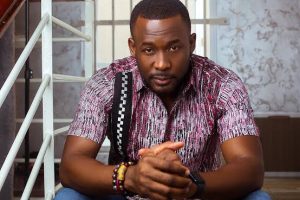Hannah Ojo’s journey to becoming a fashion stylist began unexpectedly during her school days, when she joined the BlacknBold fashion organisation at Obafemi Awolowo University in Nigeria. Little did she know that this step would set her on a path towards becoming a powerful force in the world of fashion and cultural entrepreneurship. From an intern to a team member, she soon realised her passion for styling and storytelling through fashion, ultimately leading her to create her own fashion company, Sisíhannah.
Sisíhannah isn’t just another fashion brand; it’s a platform that embodies Hannah’s vision for the cultural space, beginning with fashion and styling. Her mission? To use fashion as a means to change lives and tell stories. As a proud daughter of Ibadan, Hannah was determined to carve out a space that celebrated Nigerian culture, heritage, and craftsmanship while staying true to her roots and not relocating to the fashion epicentre of Lagos.
One of her defining characteristics is her commitment to collaboration with indigenous communities. She has consistently integrated traditional designs and craftsmanship into her projects, positively impacting local artisans and designers. Her work isn’t just about creating beautiful garments; it’s about empowering communities, preserving cultural traditions, and showcasing the rich tapestry of African creativity.
As a mentor, Hannah imparts her wisdom to the next generation of fashion enthusiasts, emphasising the importance of eco-conscious practices in the industry. She believes that sustainability should start with the basics: understanding consumption patterns and adapting them to the local context. Through her advocacy organisation, I Fashion Network Org, Hannah strives to educate every stakeholder in the fashion ecosystem about the possibilities of a sustainable fashion chain in Africa.
Balancing creativity, ethical considerations, cultural preservation, and environmental sustainability is no small feat. Still, Hannah’s approach is rooted in the belief that sustainability enhances creativity rather than stifles it. For her, fashion isn’t just about aesthetics but longevity, impact, and innovation.
Hannah’s work extends beyond fashion runways and photoshoots. She is on a mission to document and archive the fashion and style of Nigeria’s leading women, showcasing African and Nigerian-made pieces to promote re-wearing and restyling—an essential step in reducing fashion consumption. In this endeavour, she simultaneously contributes to cultural preservation and sustainable practices.
As she continues to push the boundaries of what’s possible in fashion, Hannah reminds us that fashion isn’t just about what we wear; it’s about who we are, where we come from, and the legacy we leave behind.
Can you tell us about your journey in the fashion industry and how you became a successful fashion and cultural entrepreneur?
My journey in the fashion industry started when I was at university as an “accidental” social studies student through the BlacknBold fashion organisation back at OAU. I joined the organisation as an intern and became a team member, brainstorming creative ideas and liaising with designers for the Ife Runway Showcase while also trying to pick a profession within the fashion ecosystem as a student. The interesting part of how my journey started is that, while trying to figure out my space within the industry, styling wasn’t my immediate choice as I had an interest also in makeup and photography, but one thing I do know is that I’ve always loved culture, the “art of dressing up” and helping people “dress up,” as I knew it growing up, so it is no surprise I landed on styling eventually. As a university graduate, I was sure I wouldn’t work for any random corporation, as it was either working in the cultural space or nothing. Through my work and eagerness to learn, I started meeting people who have now been instrumental to my growth within the industry.
Success, I think, is very subjective, so I’d instead use the word GROWTH. I owe that to God and the many people who have given me access, bet on the brand, and are still willing to bet on me and my brands. I want to mention a few of them: my very supportive family and friends, the visionary who is OA (founder of Lagos Fashion Week), The Styleinfidel, Ejiro Amos Tafiri, Perelei, Femi Olayebi of LLF, Helen Prest Ajayi, Ronke Giwa Onafuwa, Abiola Orimolade, Kunmi Owopetu, and all the fantastic creatives and fashion professionals I’ve been privileged to work with. Thank you!!!
What inspired you to start your own fashion company, Sisíhannah, and how does it align with your mission of using fashion to change lives and tell stories?
Well, as a girl from Ibadan, I didn’t find the perfect space suitable for my vision, and the only option I had was to create it because I was also hell-bent on not moving to Lagos. I had to create Sisíhannah to encompass my vision for the cultural space and ecosystem, starting with fashion and styling. Styling because that gets me closer to the foundation of the system, the people, the consumers, and also to fully understand the consumer’s perception of “fashion.” What better way to tell our stories than through our fashion and culture? I believe it serves as a major part of who we are, our identity as individuals and as a community, and also because it is a large economy that puts food on people’s tables, heals, connects, liberates, and announces us to the world. If that isn’t changing lives, I don’t know what else is.
We see that you regularly collaborate with indigenous communities to incorporate their traditional designs and craftsmanship into your projects. Can you share a specific example of how this collaboration has made a positive impact?
As I will always say, the fashion and cultural space is an entire system, and not one person is outside of it. A lot of my work is centred around people from different parts of the ecosystem, from consumers to producers, which facilitates discoveries, especially by the consumer, and, in turn, gives more visibility to the brands amongst a diverse group of people.
I’d say there are multiple examples, but I will share a specific one that is really dear to my heart: The Fashion Therapy Project. I was able to collaborate with some amazing designers for the first phase, telling their stories through the clothing while also describing the emotions attached to them. This gave more meaning to the pieces, which will in turn help a consumer create a better relationship with the pieces while providing a more lasting use for clothing. It feels so amazing to be able to make an impact on consumer consumption for a better life through industry collaborations.
As a mentor for young individuals interested in sustainable fashion, what advice do you give them to promote eco-conscious practices in the industry?
I always emphasise starting your sustainability practices with the basics, and then you can read up on the grand scheme of it. The basics can be understanding your consumption patterns and those within your close environment, as this can help you discover a more diverse opportunity within the ecosystem. Then, never stop your research, and always break it down to the peculiarities of your environment.
Could you elaborate on the initiatives and activities of your sustainable fashion advocacy organisation, I Fashion Network Org? How do you drive policy changes and increase public awareness about the fashion industry’s environmental impact?
Though we took quite a long break to venture into research mode and really dig deep into the inside of African fashion and its peculiarities, our primary goal is to educate every part of the ecosystem on the possibilities of creating a sustainable fashion chain within the African cultural ecosystem while also partnering with other institutions and industries. A notable initiative of ours is the I Fashion Network conference in partnership with the Ministry of Youth and Sports and the Ministry of Culture and Tourism in Ibadan, Oyo State, which hosted almost 200 young individuals interested in the fashion industry to educate them on the various opportunities available within the industry while also introducing the circular economy approach to them. So far, we have connected young individuals to multiple careers within the industry through partnerships and collaborations with other institutions. Our focus isn’t only on designers or fashion entrepreneurs, as the environmental impact of the fashion industry also concerns fashion workers, artisans, service providers, and consumers because a policy will only be valid with the education of the people in the environment. Hopefully, we will be able to announce some of our initiatives and projects soon.

How do you balance the creative aspects of fashion with the ethical considerations of cultural preservation and environmental sustainability? Why do you think it’s important to prioritise both?
Hmmmm! I can’t say I have found the balance yet as I’m still figuring it out, but what I do now is try not to alienate private clients from the mainstream fashion world, so I am developing a process that can work across all my different projects and to make sure our basic foundation is creativity and sustainability. It’s the reason SISÍHANNAH’s tagline is “fashion at the core,” as fashion is not fashion without lifelong values and putting into consideration “life” and “soul.” This serves as a reminder for many of my works.
Life expectancy is something to think about, whether dealing with the clothes, the wearer, or the environment. I believe it’s why we should not just look at sustainability as an idea that limits creativity but instead as one that enhances creativity, as it births innovation.
Can you share your approach to monitoring the impact of your work on cultural preservation and environmental sustainability, as well as the metrics you use to track progress?
Well, this is mostly done through personal projects. One of them is the project we are currently running with THISDAY Style magazine and Ginstarp Studios to document through photographs the fashion and style of Nigeria’s leading women in their comfort spaces, wearing only African and Nigerian-made pieces from their wardrobes. This will encourage re-wearing and restyling already-owned pieces, thereby reducing consumption. Documenting and archiving are also major paths to cultural preservation. We believe archiving projects like these will bring more clarity to our history in the future.
How do you stay up-to-date on the latest trends and innovations in sustainable fashion, and what resources do you rely on for inspiration?
The internet, for maybe the latest trends, though the trends don’t really shape the work we do at SISÍHANNAH. As for innovations in sustainable fashion, I study my immediate environment and the African continent at large, then Western media and books for more insights. First, the subject is my ultimate inspiration, then Google is my friend, and maybe Pinterest, lol.
What are your thoughts on the fashion industry’s future over the next 5–10 years, and how do you envision sustainable fashion practices contributing to its evolution?
Okay! If we don’t invest in education within the industry and collaborate with other industries, fashion will only keep moving in circles and getting the same “results.” Hopefully, a deep dive into our ancient sustainable fashion practices will become more mainstream, and certain practices will not be seen as new but as an ode to our true identity.

Source
Disclaimer: No copyright infringement intended. All rights and credits reserved to respective owner(s).






















Add Comment